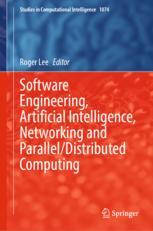2 A. Bossard Microcontrollers based on the AVR architecture have proven popular over the years, notably due to the widespread usage of the Arduino Uno boards equipped with the ATmega328P microcontroller of Microchip Technology [2, 11]. The AVR instruction set architecture (ISA) relies on the reduced instruction set computer (RISC) principle; it is an 8-bit architecture [12]. (It can be noted though that a 32-bit version, AVR32, which is only partly related to AVR, did also exist but is not supported any more.) In addition, popular development environments for microcontrollers support high- level languages such as C/C++ (e.g. the Arduino development environment [8]), Python (e.g. Python Editor for BBC micro:bit [5]) and even visual programming (e.g. Scratch for BBC micro:bit [9]). Combined with an accessible user interface, these make performant solutions for general programming educational purposes. However, they are less fit for, say, computer architecture lectures of undergradu- ate computer science curricula. In this case, a precise understanding of hardware units and their operation is required, which is why directly relying on the assembly language is definitely meaningful in such a context [4, 6, 15]. The objective of this research project is thus to provide a non-intrusive, cross- platform development environment for AVR programming in assembly which fea- tures a high accessibility so as to be suitable for educational environments and appli- cations. The proposed development environment is neither just a front-end nor just a code editor, it is a combination of both, and with additional, specific features for AVR programming in assembly. It is an integrated development environment (IDE). We have called it A-IDE. The rest of this paper is organised as follows: preliminary information is given in Sect. 2. The proposal is described in detail in Sect. 3 and quantitatively evaluated in Sect. 4. Finally, Sect. 5 concludes this paper.
چکیده فارسی
2 A. میکروکنترلرهای Bossard مبتنی بر معماری AVR در طول سالها محبوبیت خود را نشان دادهاند، به ویژه به دلیل استفاده گسترده از بردهای Arduino Uno مجهز به میکروکنترلر ATmega328P از فناوری میکروچیپ [2، 11]. معماری مجموعه دستورات AVR (ISA) بر اصل کامپیوتر مجموعه دستورات کاهش یافته (RISC) متکی است. این یک معماری 8 بیتی است [12]. (البته می توان اشاره کرد که یک نسخه 32 بیتی، AVR32، که تنها بخشی از آن مربوط به AVR است، نیز وجود داشت اما دیگر پشتیبانی نمی شود.) علاوه بر این، محیط های توسعه محبوب برای میکروکنترلرها از زبان های سطح بالا مانند C پشتیبانی می کنند. /C++ (به عنوان مثال محیط توسعه آردوینو [8])، پایتون (مثلاً ویرایشگر پایتون برای BBC micro:bit [5]) و حتی برنامه نویسی بصری (به عنوان مثال Scratch برای BBC micro:bit [9]). همراه با یک رابط کاربری در دسترس، اینها راه حل های کارآمدی را برای اهداف آموزشی برنامه نویسی عمومی ایجاد می کنند. با این حال، برای مثال، سخنرانیهای معماری کامپیوتر در برنامههای درسی علوم کامپیوتر در مقطع کارشناسی کمتر مناسب هستند. در این مورد، درک دقیق واحدهای سخت افزاری و عملکرد آنها مورد نیاز است، به همین دلیل است که اتکای مستقیم به زبان اسمبلی قطعا در چنین زمینه ای معنادار است [4، 6، 15]. بنابراین هدف این پروژه تحقیقاتی ارائه یک محیط توسعه غیر نفوذی و متقابل پلتفرم برای برنامه نویسی AVR در اسمبلی است که دارای دسترسی بالایی باشد تا برای محیط های آموزشی و برنامه های کاربردی مناسب باشد. محیط توسعه پیشنهادی نه فقط یک فرانت اند و نه فقط یک ویرایشگر کد است، بلکه ترکیبی از هر دو و با ویژگی های اضافی و ویژه برای برنامه نویسی AVR در اسمبلی است. این یک محیط توسعه یکپارچه (IDE) است. ما آن را A-IDE نامیده ایم. بقیه این مقاله به شرح زیر سازماندهی شده است: اطلاعات اولیه در بخش داده شده است. 2. پروپوزال به تفصیل در بخش توضیح داده شده است. 3 و به صورت کمی در بخش ارزیابی شد. 4. سرانجام، فرقه. 5 این مقاله را به پایان می رساند.
ادامه ...
بستن ...
Editor
Roger Lee
Software Engineering and Information
Technology Institute
Central Michigan University
Mt. Pleasant, MI, USA
ISSN 1860-949X ISSN 1860-9503 (electronic)
Studies in Computational Intelligence
ISBN 978-3-031-19603-4 ISBN 978-3-031-19604-1 (eBook)
https://doi.org/10.1007/978-3-031-19604-1
© The Editor(s) (if applicable) and The Author(s), under exclusive license to Springer Nature
Switzerland AG 2023
This work is subject to copyright. All rights are solely and exclusively licensed by the Publisher, whether
the whole or part of the material is concerned, specifically the rights of translation, reprinting, reuse
of illustrations, recitation, broadcasting, reproduction on microfilms or in any other physical way, and
transmission or information storage and retrieval, electronic adaptation, computer software, or by similar
or dissimilar methodology now known or hereafter developed.
The use of general descriptive names, registered names, trademarks, service marks, etc. in this publication
does not imply, even in the absence of a specific statement, that such names are exempt from the relevant
protective laws and regulations and therefore free for general use.
The publisher, the authors, and the editors are safe to assume that the advice and information in this book
are believed to be true and accurate at the date of publication. Neither the publisher nor the authors or
the editors give a warranty, expressed or implied, with respect to the material contained herein or for any
errors or omissions that may have been made. The publisher remains neutral with regard to jurisdictional
claims in published maps and institutional affiliations.
This Springer imprint is published by the registered company Springer Nature Switzerland AG
The registered company address is: Gewerbestrasse 11, 6330 Cham, Switzerland
ادامه ...
بستن ...










